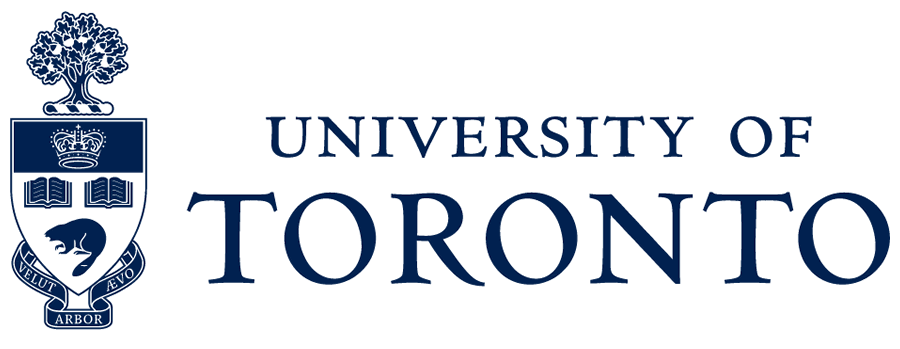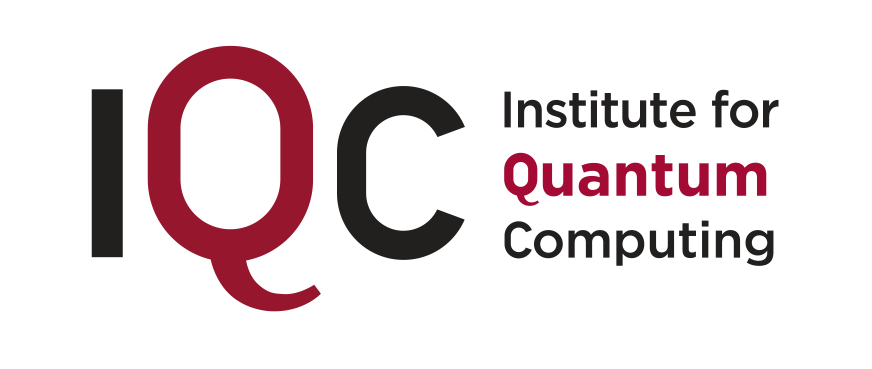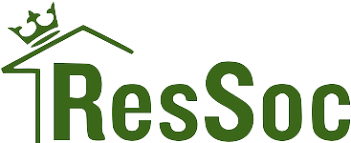Jump To:
Download:
Education
Designed, simulated, and experimentally tested microchip-based optical devices, including a quantum entangled-photon source, for next-generation precision-sensing, communications, and imaging. Work centered on emerging technologies in the field of quantum photonics.
Read more about my Master’s work here.
Focus Areas:
- scientific computing and physics simulation (Python, finite element analysis, quantum mechanics, semiconductor bandgap engineering, guided-wave and nonlinear optics)
- microelectronics and fabrication techniques (e.g. VLSI layout, lithography, cleanroom experience)
- optical technologies (lasers, fiber optics, integrated optical components and circuits)
- practical laboratory skills (building test equipment, automation, troubleshooting instruments, optical alignment and mode-finding)
- project creation and management
- peer-reviewed journal publications
- written thesis and oral defense
Multidisciplinary degree tailored for engineering careers at the forefront of technology, emphasizing deep-rooted analytic abilities and high-level thinking. Fourth-year thesis focused on medical imaging for cancer radiotherapy.
Read more about my fourth-year thesis here.
Focus Areas:
- applied physics (medical imaging, semiconductor devices, electromagnetics, optics, nuclear technologies)
- programming and scientific computing (MATLAB, C, C++, ANSYS, CAD)
- electronics (filters, amplifiers, digital ICs, microcontrollers, PSPICE)
- mathematics (statistics, partial differential equations, linear algebra, complex analysis, control theory)
- power generation (turbomachinery, fluid mechanics, thermodynamics, solar and wind technology)
- project management (year-long team design project, independent research and design thesis)
Work Experience
Artificial Intelligence Developer
Rangle.io, Toronto, Canada
Dec. 2018 – present

Working at a leading software consultancy, I help clients find and implement Artificial Intelligence opportunities that bring value to their business. Past projects include development of a machine learning application for audio classification, and strategic product roadmapping for a client in the financial compliance sector.
Junior Software Developer
Clotho.ai, Toronto, Canada
Sept. 2018 – Nov. 2018

Part-time position between jobs, programming tasks for a Node.js based API at a young pre-revenue startup in the field of forensic analysis.
CTO & Co-Founder
QuWare Inc., Toronto, Canada
Aug. 2016 – Sept. 2018

QuWare was a hardware startup aimed at changing the way we assess health, both clinically and for medical R&D. Its goal was to achieve functional real-time imaging of cells and tissues beneath the body’s surface at microscope-grade resolutions. This exploited recent breakthroughs at the University of Toronto that enabled better control over how light interacts with tissue.
I co-founded this company with a Professor at the University of Toronto, partially based on research I conducted there during my Master’s degree. QuWare was among the small number of startups to successfully graduate from Toronto’s prestigious Creative Destruction Lab accelerator during its class of 2016-2017.
I wore many hats, including technology development, business development, and raising capital.
Read more about my journey with QuWare here.
Research Associate
University of Toronto, Canada
Dec. 2016 – May 2018

Led the development of new integrated-optics technologies in the emerging field of quantum photonics.
Major Activities:
- defining new research directions; managing research projects; providing training, mentorship, and supervision
- designing chip-based photonic devices; leading proof-of-concept experiments
- grant writing, research presentations; interacting with funding sources
- IP filing and prototype development
Read more about quantum photonics here.
Research Assistant
University of Toronto, Canada
Mar. 2016 – Dec. 2016

- researched and developed new integrated photonics technologies (see above)
- was promoted to a full staff position (Research Associate) in Dec 2017
Undertook engineering projects for a small company specializing in security and integrated solutions for condominiums and large residential complexes. Projects included interfacing and testing a prototype echo-cancellation unit with company’s voice-over-IP intercom systems and audio processing hardware.
Research Assistant
University of Toronto, Canada
Sept. 2012 – Mar. 2013

I was part of a team developing fully-automated chip-based medical diagnostic sensors, to allow rapid on-the-spot testing for diseases and pathogens. I gained experience working in a biotechnology lab and learned about cutting-edge techniques in gene sequencing, protein synthesis, and biomarker detection.
Major Activities:
- cleanroom microfabrication of prototype chips (at TNFC, Toronto)
- improvements to the chip design and fabrication recipes
- building support electronics for device control
- performance testing of prototype chips (including biological pathogen preparation, chemical solution preparation, and results readout)
Read more about my work on biosensors here.
I worked on one of Canada’s first entanglement-compatible superconducting quantum processors, and was tasked with putting together hardware and software for controlling its quantum bits and carrying out experiments on them. This required a deep understanding of the highly complex physics and mathematics behind controlling quantum systems, which must be built into the procedures implemented by the code and the way the hardware is configured.
Major Activities:
- writing Python code for interacting with the quantum processor
- configuring and assembling RF microwave circuitry to interface with the quantum processor
- implementing algorithms for: controlling the quantum bits (quantum gate sequences); reading out the quantum state via tomographic reconstruction; and analyzing noise and error processes
- running experiments to characterize the quantum processor and demonstrate its capabilities
Read more about my time as a “quantum-coder” here.
I conducted research for Calian at Canada’s Royal Military College, where I investigated new techniques (surface-plasmon resonance in thin-film materials) for improving the performance of organic solar cells and electro-optic devices. I was in charge of preparing test samples using thin-film deposition and optical diffraction grating design, and device performance testing.
Working for the Department of Chemistry, I independently developed new performance tests for asphalt cement binders at the microscopic level, aimed at improving the standard of asphalt grading in contracts across the province for longer-lasting roads that are more cost-effective.
Major Activities:
- oversaw installation of new laboratory equipment (nano-indentation system, ~$150k)
- mechanical part design (CAD drawings, machining)
- designed, conducted, and analyzed experiments providing a proof-of-concept demonstration of the new asphalt-grading technique
Leadership Experiences
Treasurer
SPIE Toronto Student Chapter,
University of Toronto, Canada
Mar. 2014 – Mar. 2015

SPIE is the International Society for Optics and Photonics. Serving as Treasurer for our local student chapter, my responsibilities included:
- obtaining funding to host technical speakers and send students to professional development workshops
- annual reporting of expenses & activities to SPIE
- event planning and recruitment
Co-Chair
ECE Connections Graduate Symposium,
University of Toronto, Canada
Dec. 2013 – Feb. 2015

I co-managed a committee of graduate students to organize an annual research symposium bringing students, faculty, and industry leaders together to discuss multidisciplinary innovations and opportunities for collaboration (~200 attendees).
Major Activities:
- oversaw all aspects of event planning and implementation; provided leadership to an 8-person committee
- secured over $8,000 CAD in sponsorship from companies including Intel, Infinera, and Altera
- attracted corporate attendees, keynote speakers; organized event logistics
Read more about our ECE Connections event here.
Founder and Student Ambassador
QueensYOU Campaign,
Queen’s University, Kingston, Canada
Feb. 2012 – May 2012

Led a student-run campaign to address abrupt changes made to academic and grading policy that were impacting students.
Highlights:
- organized round-table meetings that brought together the heads of all student governments across campus to discuss concerns and pitch solutions
- gave a speech at the Queen’s University Senate and held one-on-one meetings with the Principal and Provost to discuss proposed solutions and mitigation strategies
Read more about my journey leading the QueensYOU Campaign here.
Technical Director
Queen’s Fuel Cell Team (QFCT),
Queen’s University, Kingston, Canada
Apr. 2011 – May 2012

Design of the world’s first hydrogen-powered snowmobile for the SEA Clean Snowmobile Challenge.
- previously served as Electrical Manager, 2010-2011, and Assistant Electrical Manager, 2009-2010
- responsible for defining and coordinating projects overseeing multiple vehicle systems including:
- electrical (fuel cell, battery, motor interface, battery management systems)
- mechanical (transmission redesign, electric motor mounting)
- control (thermal management, integrated safety systems)
- provided mentorship to over 40 undergraduate students with a focus on personal and professional growth
- developed recruitment, outreach, and sponsorship strategies with the rest of the team executive
- snowmobile won 3rd place in its first debut at the competition (zero-emissions category)
Read more about my time with QFCT here.
Awards and Achievements
- 2017 − Graduate, Creative Destruction Lab
- 2016 − NSERC Idea to Innovation Grant for technology commercialization ($120,000)
- 2013 − Ontario Graduate Scholarship ($15,000)
- 2012 − NSERC Alexander Graham Bell Canada Graduate Scholarship ($17,500)
- 2012 − NSERC Undergraduate Student Research Award, Institute for Quantum Computing ($8,000)
- 2012 − Harold M. Cave Scholarship in Experimental Physics, Queen’s University ($1,500)
- 2011 − James H. Rattray Memorial Scholarship in Applied Science, Queen’s University ($1,350)
- 2010 − NSERC Undergraduate Student Research Award, Queen’s University, Dept. of Chemistry ($8,000)
- 2008 to 2012 − Queen’s University Dean’s Scholar
- 2008 to 2012 − Queen’s University Chancellor’s Scholarship ($36,000)
Publications
Peer-Reviewed Journals:
- A. Brodutch, R. Marchildon, and A. S. Helmy, “Dynamically reconfigurable sources for arbitrary Gaussian states in integrated photonics circuits”, Optics Express, vol. 26, no. 13, pg. 17635 (2018). [download]
- J. L. Orgiazzi, C. Deng, D. Layden, R. Marchildon, F. Kitapali, F. Shen, M. Bal, F. R. Ong, and A. Lupascu, “Flux qubits in a planar circuit quantum electrodynamics architecture: quantum control and decoherence”, Physical Review B, vol. 93, no. 10, pg. 104518 (2016). [download]
- Ryan P. Marchildon and Amr S. Helmy, “Deterministic separation of arbitrary photon pair states in integrated quantum circuits”, Laser & Phonics Reviews, vol. 4, no. 2, pg. 245 (2016). [download]
- Ryan P. Marchildon and Amr S. Helmy, “Dispersion-enabled quantum state control in integrated photonics”, Optica, vol. 3, no.4, pg. 243 (2016). [download]
- Ryan P. Marchildon and Simon A. M. Hesp, “Development of Microindentation Tests for the Specification Grading of Asphalt Cements”, International Journal of Pavement Research and Technology, vol. 4, no.4, pg. 222-230 (2011). [download]
- Michael Evans, Ryan Marchildon, and Simon A. M. Hesp, “Effects of Physical Hardening on Stress Relaxation in Asphalt Cements: Implications for Pavement Performance”, Transportation Research Record: Journal of the Transportation Research Board, no. 2207, pp. 34-42 (2011).
Research Conferences:
- Invited Keynote Talk: Ryan Marchildon and Amr S. Helmy, “Quantum interference in monolithic nanophotonics”, Proc. SPIE 10111, Quantum Sensing and Nano Electronics and Photonics XIV, 101112I (January 28, 2017). [doi:10.1117/12.2242790]
- R. P. Marchildon and A. S. Helmy, “Quantum state engineering in integrated couplers”, Lasers and Electro-Optics (CLEO) 2015 Conference, paper # JW2A.17, San Jose CA, 10-15 May (2015).
- Adrian Lupascu, Jean-Luc Orgiazzi, David Layden, Ryan Marchildon, Mustafa Bal, Chunqing Deng, and Florian Ong, “Decoherence of superconducting flux qubits in coplanar waveguide resonators”, APS March Meeting 2014, vol. 59, no. 1, abstract # F28.00009, Denver CO, March 2-7 (2014).
- Darius G. Rackus, Alexandre Zaragoza, Alya Bhimji, Ryan Marchildon, Michael D. M. Dryden, Mahla Poudineh, Mohtashim Shamsi, Shana O. Kelley, and Aaron Wheeler, “Towards Automated Electrochemical ELISA on a Chip”, 59th International Conference on Analytical Sciences and Spectroscopy, (June 28, 2013).
- Jean-Luc Orgiazzi, David Layden, Ryan Marchildon, Mustafa Bal, Chunqing Deng, Florian Ong, and Adrian Lupascu, “Experimental results on decoherence and readout of coupled superconducting flux qubits in a circuit-QED setup”, APS March Meeting 2013, vol. 58, no.1, abstract # A25.003, Baltimore MA, March 18-22 (2013).
- Evans, Marchildon, and Hesp, “Effects of Physical Hardening on Stress Relaxation in Asphalt Cements: Implications for Pavement Performance”, Transportation Research Board 90 th Annual Meeting, session # 267, paper # 11-1221, Washington DC, Jan. 23-27 (2011).
- Marchildon and Hesp, “Development of Microindentation Tests for the Specification Grading of Asphalt Cements”, Transportation Research Board 90 th Annual Meeting, presentation session # 550, Washington DC, Jan. 23-27 (2011).
Technical and Professional Skills
Core Technical Competencies:
- Programming and Scientific Computing, including Simulation, and Finite-Element Methods; languages and software packages include Python, JavaScript, C, MATLAB, Mathematica, and ANSYS
- Data Science and Machine Learning: experience programming neural networks in TensorFlow and Keras; experience with Python libraries for data cleaning, analysis, and classification; understanding of algorithms, pipelines, and best-practices
- Applied Mathematics: Statistics, Linear Algebra, Signal Processing, Differential Equations
- Applied Physics: Medical Imaging, Semiconductor Technologies, Quantum Computing, Photonics
- Experience with Electronics, Circuit Design, PCB Assembly, and Microcontroller Programming
- Experience with Prototyping, Experimental Design, Testing, Fabrication, and Hardware/Software Troubleshooting
Programming and Software:
- Python (advanced), including NumPy, SciPy, Pandas, scikit-learn, matplotlib, and seaborn libraries
- Deep Learning APIs: TensorFlow, Keras (on NVIDIA’s CUDA, CuDNN)
- C (advanced), C++ (beginner)
- MATLAB (advanced), Mathematica (advanced)
- JavaScript, Node.js
- MySQL
- Pre-production development (IPython, Jupyter Notebook)
- Source Control (Git)
- LaTeX
- Finite Element Analysis (ANSYS, COMSOL, and Lumerical)
- Circuit Analysis and VLSI Layout (PSPICE and Cadence Framework)
- Visual presentation: Adobe Illustrator, Adobe Photoshop
Professional Skills:
- Experience Launching a Startup: company founding, crafting pitch decks, holding investor meetings, drafting term sheets, filing IP, building a strong legal foundation, financial forecasting, market research, finding early adopters, customer development, grant filing and tax credits.
- Project Management: defining projects, delegating tasks, time management, measuring progress metrics, providing training, team hiring, and resource planning in a variety of roles (e.g. Research Associate @ UToronto, Technical Director of Queen’s University Fuel Cell Team).
- Leadership: Crafting and pitching a vision, forming teams, radical collaboration, providing mentorship, in a variety of roles (e.g. Co-Founder at QuWare, Founder and Student Ambassador of QueensYOU Campaign).
- Excellent Oral and Written Communication: public speaking at research conferences, published authorship in peer-reviewed journals, investor presentations, elevator pitches, experience conveying technical insights to non-technical audiences.
- Knowledge and experience working with Design Thinking and Validated Learning paradigms.





